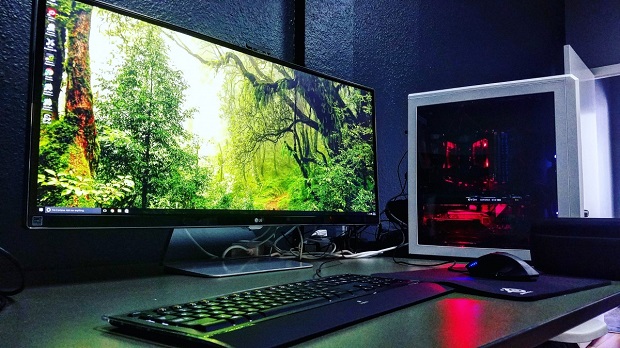Computer LED Monitor - Analysis and Buying Guide - 2022
LED monitors, or "flat panel displays" as some call them, were slightly futuristic when they first appeared. Unfortunately, computer monitors that use LEDs (light-emitting diodes) didn't have much in the way of resolution and responsiveness at first. All that has changed. They are now high-resolution screens, which save space and can be used for high-end gaming or watching movies, in addition to running all the normal applications.
As with all things electronic, prices have dropped considerably while resolution, speed and color depth have increased. Screen sizes range from 19.5 inches to 27 inches and can be flat or curved. Curved monitors are supposed to help reduce eye strain.
LED monitors bring with them many benefits, not the least of which is reduced power requirements. There is also no burn-in like there was with the old CRT monitors.
Regardless of what you need – more landscape for large spreadsheets or fast refresh for high-end first-person shooters – there's an LED monitor out there for you. Let 's research all about them so you can find the perfect model for you.
Key Considerations
You need to consider a number of things before deciding which monitor to get. Go down the list and examine each of them separately. It will give you a much better idea of which monitors to consider.
- Connections
First, you need to know what video connections your computer has. If you only have an old VGA connection then you won't be able to use the bigger and faster monitors as they usually require HDMI. Modern computers usually have at least one HDMI or DVI connector. Some have a DP (display port) connection.
Adapters are available but there is always some resolution or refresh loss when you use them, regardless of what the manufacturers say. It's best to use connections that are native to your system.
- Size
LED monitors use less space on your desk from front to back than older CRTs, but they take up more space from side to side. A 27-inch monitor sounds great until you have to make room for it on your desk. Depending on your circumstances, a 24-inch or even a 22-inch screen might be better.
You should consider the height as well. Flat screen monitors require a stand that can add three to four inches to their height. If you have a top shelf on your desk, measure it just to be sure. You should also keep in mind that the base of the stand can add four to six inches to the depth as well.
- Resolution
The resolution of computer monitors (LED or otherwise) is measured in pixels. All things being equal, a 21-inch monitor with 1920 x 1080 pixels will look better than a 27-inch monitor with the same resolution. That's because you're packing the same number of pixels into a smaller area, which means the pixels themselves have to be smaller.
When you're sitting too close to a big screen, you start to be able to distinguish individual pixels. Images and videos will appear blocked or “pixelated.” If you want a very sharp image and plan to see a lot of vivid content on the screen, it may be worth spending more for a higher resolution.
- Response Time
The response time of LED monitors is a measure of how quickly individual pixels change from one hue to another. Since a frame will stay on the screen for 17 milliseconds on a 60Hz monitor, the pixels need to change faster than that. If they don't, they will experience ghosting or blurring during rapid screen changes. This will be especially noticeable during games or high resolution videos.
Flat Screen vs. Curved Screen
Older CRT monitors had a convex surface that curved slightly outward. This was necessary due to the nature of the cathode emitter at the back of the tube firing from a central location. Without the curve, the dots (pixels) at the edges of the screen would have been elongated instead of round.
LED monitors don't suffer from that limitation as there is an individual LED for each pixel; therefore, they are flat. As screens became larger, the limitations of human sight began to make themselves known.
People see the world in three dimensions, but flat screens only show two. As a result, your eyes naturally focus on the center of the screen, losing focus by an eighth of the screen at each edge. A curved, concave screen focuses the eyes more naturally.
Tips
Lower the brightness level to conserve power. You'll still get vibrant colors and save some money on your electricity bill.
Place a 19-inch monitor an arm's length away from you. Add an extra inch of distance for every additional inch of monitor size.
Turn the lights off to the side and slightly behind the monitor to avoid screen glare.
Don't put the monitor in front of a window. It will create tension in your eyes due to the brightness contrast of both.
Do not use glass or window cleaner to clean the screen. Turn it off and use a dry microfiber cloth to clean it.
Other Products We Consider
There are dozens of brands of LED monitors. We focus mainly on brand names that people know, but others are worth checking out as well. The Scepter Ultra Thin 24" is a strong competitor with built-in speakers and variable settings for resolution and refresh rate. Dell has a 31.5" D-Series LED monitor that is white on the back with a black face on the front. It's a bit of a monstrosity and only has 1920 x 1080 resolution for all that scenery, but it's reasonably priced and would be great if you use a remote keyboard and want to be able to read the screen from across the room.
Read More :

